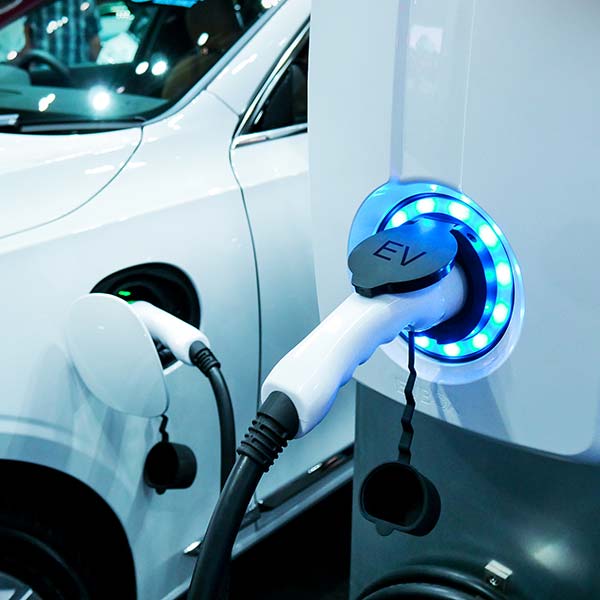Overview
Over the last fifteen years, most of the common consumer electronic devices have gradually become thinner and lighter. Large screen TV’s, cell phones, laptops, and tablets have all had reductions in size and weight, even though the devices themselves are becoming more powerful. One of the main reasons for this has been the switch to flexible graphite heat spreaders. Now, this same graphite heat spreading technology is being applied to the batteries used to power the next generation of Electric Vehicles (EV’s).
Battery Heat Management
EV designers have several goals that involve the battery. These include the longest possible driving range per battery charge, the ability to charge the battery in the fastest time possible, the longest possible battery lifetime, and having a battery that is as safe as possible. All these goals involve managing the heat given off by the battery. Like most high-power electronic devices, the batteries used in Electric Vehicles generate a lot of heat. This is a result of the chemical reactions involved with both charging and discharging. This heat must be removed as fast as it is generated or else the individual chemical-cells that make up the battery pack will quickly start to wear out.
To spread this heat and cool the battery, the EV companies have relied on using massive quantities of aluminum. (This metal is commonly used for spreading heat in low-end electronic devices and was the basis for the heavy plasma TV’s of the early-2000’s and the thick cell phones and laptops of the early-2010’s.)
The main problem with using aluminum to manage heat is that it has the unfortunate combination of being a relatively poor thermal conductor, while at the same time it is relatively dense. This means that EV batteries that are cooled with aluminum need thick plates of the metal to work properly. This results in batteries that are unacceptably large and heavy to be practical for use in an EV.
Battery Size and Weight Reduction
To have an aluminum cooled battery that is small and light enough to fit in an EV, some of the desired features must be sacrificed. The battery designers will typically remove some of the aluminum that is needed for the battery to function properly. This will result in an EV that cannot be consistently fast charged, or has a poor battery lifetime, or is not as safe as it could be. Typically, a compromise is reached between the battery manufacturer and the EV company to try to balance out these negative factors.
To construct a battery that is small enough and lightweight enough to work in an EV, while at the same time meeting all the desired design goals, something must change. Replacing the aluminum used for battery cooling with flexible graphite heat spreaders is such an answer. For the same amount of heat spreading as aluminum, graphite is half the thickness and only a third of the weight.
The amount of energy in a given weight or volume of the battery increases dramatically by removing the thick and heavy aluminum and replacing it with thin and lightweight flexible graphite. For a typical EV battery pack, switching from aluminum to graphite results in a weight savings of around twenty kilograms (forty-four pounds). The size of the battery pack can be reduced by several centimeters in both the length and the width.
For the last decade, graphite has been widely used in high-performance cell phones, laptops, TV displays, and tablets. Many automotive companies and their Tier-1 suppliers are currently investigating how graphite will be used in their next generation of EV’s. Don’t be surprised if the next Electric Vehicle you buy has a battery that is cooled with NeoGraf Solutions flexible graphite.
B. A. TRIMMER
eGraf® SpreaderShield™ flexible graphite heat spreader materials are a unique line of products capable of cooling a hot component, protecting a temperature-sensitive component, reducing a thermal gradient, or preventing a surface hot spot.

